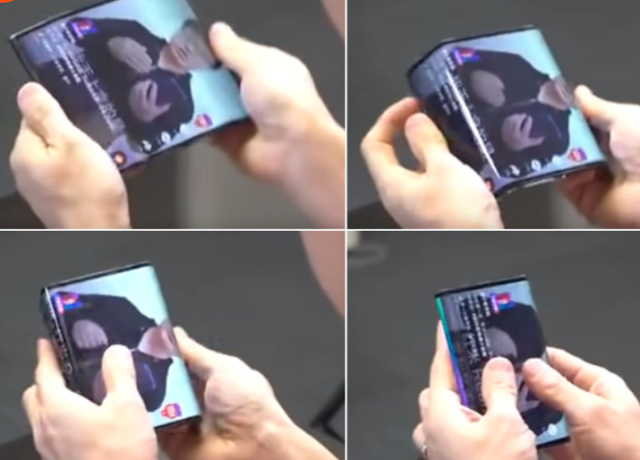TAKING THE "ALL-SCREEN SMARTPHONE" TREND TOO LITERALLY. —
Xiaomi says the Mi Mix Alpha is "almost entirely display."
Xiaomi is back with one of its trademark insane smartphone designs. Meet the Xiaomi Mi Mix Alpha, a phone with a screen that curves around the sides and then just keeps going, wrapping all the way around the back of the device. As Xiaomi's blog post says, "the front, side, and back of the phone are almost entirely display." Xiaomi is calling this a "concept" phone, and while the company is being coy about details right now, it says it will sell the Mi Mix Alpha in December in China. The Mi Mix Alpha might not be a foldable smartphone, but it does come with a foldable smartphone price tag: $2,810 (RMB 19,999).
OK, so... why? Why does the screen go all the way around the phone? Well, first, Xiaomi is placing functionality on the sides of the phone, since those are all pixels now. The status bar looks like it lives on the side of the phone and lists the usual readouts like the battery, cellular connectivity, Bluetooth, and other icons. Using the sides for the screen necessitates relocating the power and volume buttons, and while there is still a physical power button on the top, virtual side buttons will be taking over for volume duties.
A button on the left side (named "6" in the renders) seems like it will be use as the volume button. And on second gesture navigation, it look like the Android navigation buttons for "Back" and "Home" live on the right side of the wraparound display. Controlling this phone sound like it will take some getting used to.
The main design change enabled by the back screen is that a selfie camera is not necessary. When there is also a screen on the back, you can just flip the phone over, use the main camera to take a selfie, and use the back screen as a viewfinder. That's about it as far as justifying this design goes.
While the display is the highlight of the this phone, Xiaomi doesn't run out of breath talking about it. There's no publicized display size or resolution measurements—and where would you even start and stop measuring on this device, anyway? The one display spec we get is the made-for-headlines quote that the phone has "a screen-to-body ratio of more than 180.6%," which is not at all how the "screen-to-body ratio" spec is supposed to work.
Screen percentages
180.6% screen-to-body ratio would mean you're approaching nearly twice as much "screen" as "body." Xiaomi neglected to show its work on the math here, but the way screen-to-body ratio usually works is by comparing the area of the front of the phone to the area of the screen. Then you'll get something like "88.3%" for a phone like the OnePlus 7 Pro, meaning the front of the phone is 88.3% screen and 11.7% bezel. Xiaomi seems to be comparing the front phone area to the entire phone screen, which also includes the back of the phone, which removes all meaning from the bezel-measurement spec. These numbers sound impressive, I guess, if you don't think about them too much.
The other critical information we're missing is any word on what the cover for the display is. Foldable phones have to make due with a soft, flexible-plastic cover. But since this phone doesn't have a moving display, it's possible that glass or a hard plastic could be used. Xiaomi only promises a "smooth and flat surface" for the screen from a "durable protective layer."
But hold on a minute—how does the touchscreen work when the sides are all screen? Wouldn't you constantly be touching the touchscreen and sending errant display inputs? Xiaomi was not clear about how this will work, either. One possibility is that the sides aren't touch-sensitive, since Xiaomi lists "pressure-sensitive virtual side buttons" in one slide. If the sides were touch-enabled, they would have to be pressure sensitive, since a light touch would already activate them.
Other than the top and bottom, the only part of the phone that isn't screen is a bar on the back, which houses the cameras and a bunch of connectivity antennas. You at least get some premium materials with the sky-high price: the cameras are covered with sapphire glass, the border of the back strip is ceramic, and the frame is a titanium alloy.
For specs, you get a Snapdragon 855+, 12GB of RAM, 512GB of storage, and a 4050mAh battery. Xiaomi put special effort into the cameras, too, with a main 108MP (yes, one hundred and eight megapixel) camera that uses a 1/1.33-inch type sensor, one of the biggest in a modern smartphone. There's also a 20MP wide-angle camera and a 12MP 2x telephoto.
A step for Fold ?
Tags:
smart phone




